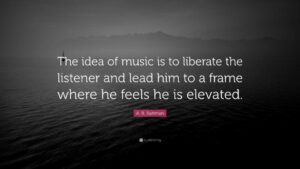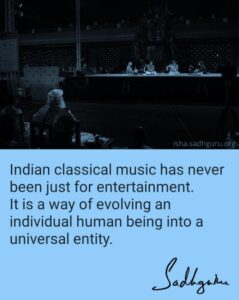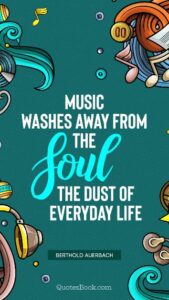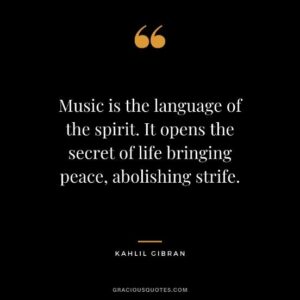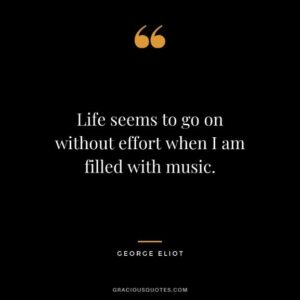Benefits of Music in Our Life

Bhairavi Bakhle
Final Year B. Pharm 2021-22
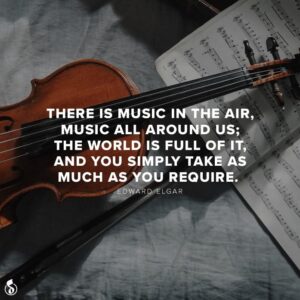 We listen to many different sounds every day, every moment. Even right now, if you are mindful of your surroundings, you will be able to hear something. Maybe multiple things. The sound of the wind, construction noises, chirping birds, and the sound of a truck honking are what I can hear as I write this.
We listen to many different sounds every day, every moment. Even right now, if you are mindful of your surroundings, you will be able to hear something. Maybe multiple things. The sound of the wind, construction noises, chirping birds, and the sound of a truck honking are what I can hear as I write this.
Sound is simply a series of longitudinal waves passing through a medium. What makes ‘sound’ a piece of ‘music’ functionally depends on the harmonies created by sound waves. And just like chirping birds sound much more pleasant than honking cars, different harmonies and frequencies of music have specific effects on our bodies. Certain loud noises like high-pitched shrills are considered pathogenic sounds which could cause severe health problems.
Many studies have shown that music stimulates various parts of the brain and bodily responses and affects the level of stress hormones. It increases metabolic activity and can stimulate autonomic nervous system activity. Music can be used as a general tonic, stimulant, sedative, and physio-therapeutic agent when used in the right ways.
We can make use of this knowledge to manage our own moods, or to create a feeling-specific atmosphere around us. For example, restaurants and cafes make use of this to create an ambient atmosphere. Also, the vastly growing field of music therapy focuses on using certain music to assist in healing; some parts of which we can all imbibe in our daily lifestyle.
A Raga in Indian classical music is a pattern of notes considered to ‘color the mind’ and express different moods. Ragas are based on Hindustani as well as Carnatic music traditions and are shown to have the power of healing our minds and body.
Ragas are used in ‘Raga therapy’ and have been rendered effective for many diseases, such as blood pressure (Raga Purvi, Todi), hysteria (Raga Khamaj, Darabari, Puriya), headache (Raga Sohani, Todi, Bhairavi), etc.
We can also listen to different renditions of Ragas to match our Circadian Rhythm. Morning Ragas like Ahir Bhairav, Todi, and Bilahari can help us start our day with exuding happiness. Whereas night Ragas like Malkauns, Baageshwari, and Bihag can evoke a peaceful and serene atmosphere required for inducing sleep.
Various instrumentalists and vocal maestros’ recitals of Ragas are freely available on the Internet. Pt. Hariprasad Chaurasia (flautist), Pt. Jasraj (vocalist), Dr. N. Rajan (violinist), Pt. Shivkumar Sharma (santoor player) and Pt. Ravi Shankar (sitarist) is some of my favorite musical legends.
Not just Ragas, but elements of the ancient Indian art of Pranayam also make use of sounds to aid healing. A technique like chanting combines the effects of music with mindfulness and meditation. When chanting specific sounds like ‘Om’, we are tuning into the frequency of love.
There is also a plethora of musical genres from around the world that we can use to elicit uplifting emotions and much more. Jazz has relaxing effects that could help with anxiety, whereas bossa nova through its ‘different’ beats lifts our spirits up. African folk music naturally gets us in our dancing shoes, and Tibetan bowl music induces deep relaxation and muscle regeneration. Western classical music concertos can give us an enriching goosebumps-inducing experience.
However, it’s good to note here that what sounds like music to someone’s ears may be an irritating noise to another. The benefits of the beauty of music can be felt in individual musical experience – finding that which feels good to us. It is definitely worth taking some time off our busy schedules and allowing our ears to indulge in the sweetness of music. As our bodies react to the sounds, we might find ourselves humming our way into happiness in no time!
